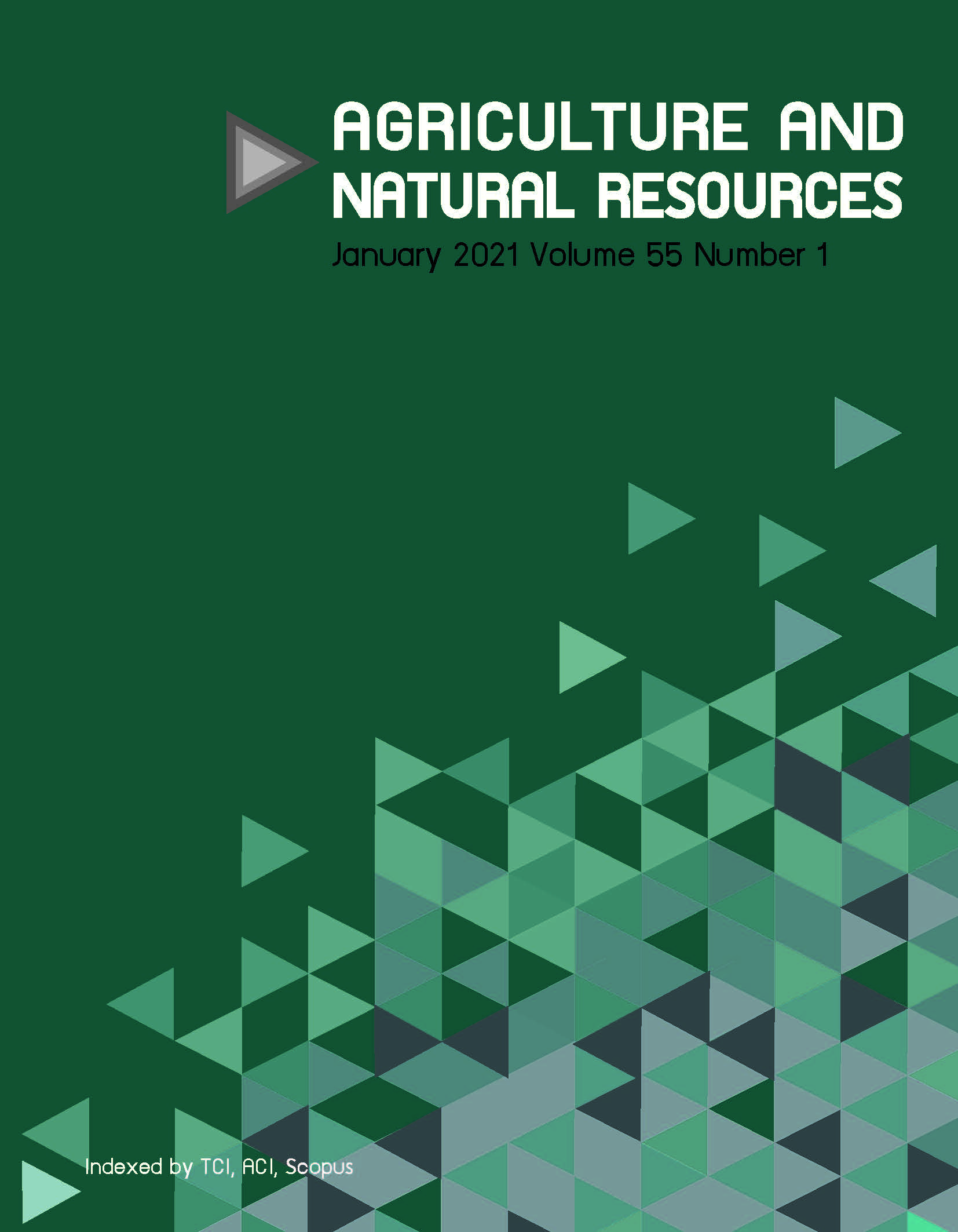Antioxidant potentials and inhibitory activities against α-amylase and α-glucosidase, and glucose uptake activity in insulin-resistance HepG2 cells of some medicinal plants
Keywords:
Antioxidant, Diabetes, Glucose uptake, Hyperglycemia, Medicinal plantAbstract
Non-communicable diseases, especially diabetes mellitus, are a growing health problem worldwide. Although many synthetic drugs have been used to manage diabetic conditions, adverse side effects such as nausea or an upset stomach have been reported. Therefore, the use of medicinal plants for prevention and alleviation of diabetes has become attractive. This research investigated the antioxidant potential and inhibitory activity against α-amylase and α-glucosidase, and the glucose uptake activity in insulin-resistant HepG2 cells of some medicinal plants (Aloe vera, Carthamus tinctorius, Cosmos sulphureus, Gymnanthemum extensum and Terminalia bellirica). The ethanolic extracts of these plants were analyzed for total phenolic content and anti-oxidative properties. The results showed that T. bellirica extract had the highest total phenolic content (1,360.79 mg
gallic acid equivalents/mL extract) followed by C. sulphureus, C. tinctorius, G. extensum and A. vera extracts, respectively. T. bellirica extract also had the highest anti-oxidative properties, followed by C. sulphureus, C. tinctorius, A. vera and G. extensum extracts, respectively. The inhibitory effects of ethanolic plant extracts against α-amylase and α-glucosidase were analyzed. T. bellirica extract had the highest efficacy to inhibit α-amylase and α-glucosidase activities compared to the other extracts. Additionally, T. bellirica extract at 0.001%, 0.01% and 0.1% enhanced the glucose uptake in insulin-resistant HepG2 cells by 35.5%, 37.9% and 21.0%, respectively, compared to the insulin-resistant HepG2 cells. Collectively, these results suggested that T. bellirica could be used as functional food for diabetes.
Downloads
Published
How to Cite
Issue
Section
License

This work is licensed under a Creative Commons Attribution-NonCommercial-NoDerivatives 4.0 International License.
online 2452-316X print 2468-1458/Copyright © 2022. This is an open access article under the CC BY-NC-ND license (http://creativecommons.org/licenses/by-nc-nd/4.0/),
production and hosting by Kasetsart University of Research and Development Institute on behalf of Kasetsart University.







